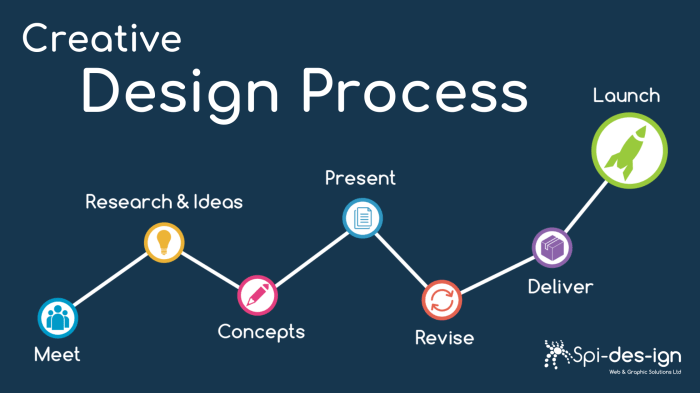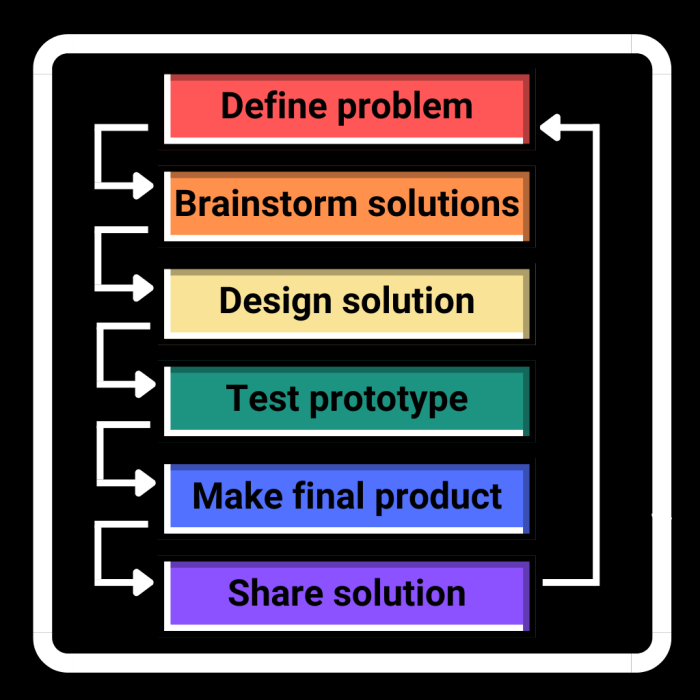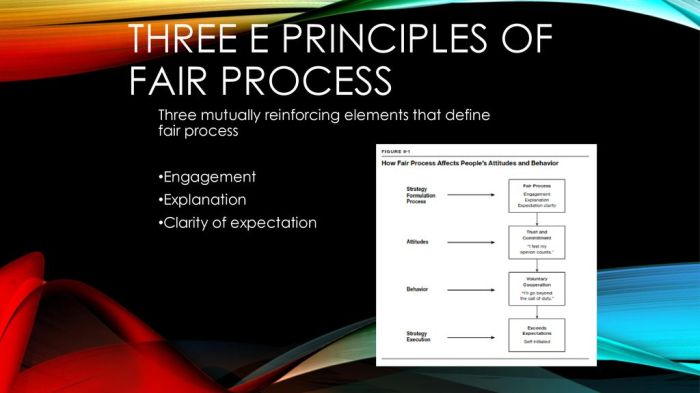Designing fair and equitable digital experiences is paramount in today’s diverse world. This process demands a thoughtful approach, moving beyond simply creating functional products to crafting solutions that truly serve all users. Ignoring equity in design leads to exclusion and reinforces existing inequalities. This guide Artikels six crucial steps to ensure your designs are both accessible and beneficial to everyone, regardless of background or ability.
By focusing on inclusive design principles, robust user research, and continuous evaluation, we can create digital products that promote fairness and reduce bias. This isn’t just about adhering to ethical guidelines; it’s about building a better, more inclusive digital future for all.
Defining Fairness and Equity in Design

Fairness and equity in design are crucial for creating inclusive and accessible products and services. They represent a commitment to ensuring that all users, regardless of their background, abilities, or circumstances, have equal opportunity to benefit from the design. This section explores the complexities of defining and implementing these principles in a practical design framework.
Defining fairness and equity in design requires careful consideration of their nuanced differences. While often used interchangeably, they represent distinct yet interconnected concepts. Fairness, in a design context, often refers to the impartial and unbiased application of rules and processes. Equity, however, goes further, acknowledging and addressing existing systemic inequalities to achieve equal outcomes. A fair system might treat everyone the same, but an equitable system actively works to level the playing field, recognizing that different individuals may require different levels of support to achieve similar results.
A Framework for Evaluating Fairness and Equity
A robust framework for evaluating fairness and equity in design should encompass several key aspects. First, it necessitates a thorough understanding of the target user population, including their diverse needs, capabilities, and potential biases. Second, the design process itself must be transparent and accountable, allowing for continuous evaluation and improvement. Finally, the framework should include metrics and methods for measuring the impact of the design on different user groups, enabling the identification of areas requiring adjustments. This iterative approach ensures that fairness and equity are not merely considered at the outset but are consistently evaluated throughout the design lifecycle.
Examples of Bias in Design Choices
Bias can subtly yet significantly impact design choices. For example, facial recognition technology has demonstrated biases against individuals with darker skin tones, leading to inaccurate identification and potentially discriminatory outcomes. Similarly, website designs that prioritize visual elements over accessibility features can exclude users with visual impairments. Furthermore, language choices in user interfaces can inadvertently exclude individuals who are not native speakers. These biases highlight the importance of carefully considering the potential impact of every design decision on different user groups.
Ethical Considerations in Equitable Design
Creating equitable designs involves significant ethical considerations. Designers have a responsibility to consider the potential consequences of their work and to strive for designs that promote social justice and minimize harm. This includes actively seeking diverse perspectives throughout the design process, ensuring that the design serves the needs of all users, and actively working to mitigate biases that could lead to exclusion or discrimination. Ignoring these ethical considerations can lead to the perpetuation of existing inequalities and the creation of technologies that exacerbate social injustices.
Comparing and Contrasting Fairness and Equity
While both fairness and equity are essential goals in design, they differ in their approach. Fairness aims for equal treatment, while equity aims for equal outcomes. Consider a scenario where a park is designed with a single, high-level playground. A fair approach might provide equal access to this playground for all children. However, an equitable approach would recognize that children with mobility impairments might not be able to access it and would therefore advocate for inclusive playground features that cater to diverse abilities. This highlights the importance of moving beyond a purely fair approach to actively strive for equity in design.
Strategies for Identifying and Mitigating Potential Biases
Identifying and mitigating bias requires a proactive and multi-faceted approach. This includes conducting thorough user research with diverse participants, employing bias detection tools and techniques during the design process, and engaging with stakeholders from diverse backgrounds to gain varied perspectives. Regular audits of existing designs can also help uncover and address unintended biases. Furthermore, establishing clear guidelines and ethical frameworks for design teams can foster a culture of inclusivity and responsible design practices. By actively addressing these points, designers can significantly reduce the risk of perpetuating harmful biases through their work.
Establishing Inclusive Design Principles

Creating a fair and equitable design process necessitates the establishment of robust inclusive design principles. These principles act as a guiding framework, ensuring that the design considers the needs and perspectives of all users, regardless of their background, abilities, or circumstances. By proactively integrating these principles, designers can mitigate bias and create products and services that are genuinely accessible and beneficial to everyone.
Effective implementation requires a multi-faceted approach encompassing the identification of key principles, stakeholder engagement, iterative feedback collection, and prioritization of marginalized communities’ needs. This process ensures that inclusivity is not merely a checklist item, but a core value integrated throughout the entire design lifecycle.
Inclusive Design Principles Checklist
A comprehensive checklist of inclusive design principles should be tailored to the specific project, but generally includes considerations across several key areas. This checklist offers a starting point for ensuring diverse needs are considered.
- Accessibility: Designs should be usable by people with disabilities, adhering to WCAG guidelines and considering various impairments (visual, auditory, motor, cognitive).
- Diversity and Representation: Design should reflect the diversity of the user base, avoiding stereotypes and ensuring representation across age, gender, race, ethnicity, socioeconomic status, and other relevant factors.
- Cultural Sensitivity: Designs should be respectful of different cultural norms, values, and languages, avoiding cultural appropriation or insensitive depictions.
- Usability: Designs should be intuitive and easy to use for all users, regardless of their technological proficiency or prior experience.
- Privacy and Security: Designs should prioritize user privacy and data security, ensuring compliance with relevant regulations and best practices.
- Equity: Designs should address systemic inequalities and strive to create equitable outcomes for all users.
Methods for Involving Diverse Stakeholders
Meaningful stakeholder engagement is crucial for creating truly inclusive designs. This requires proactive outreach and the implementation of strategies to ensure diverse voices are heard.
- Targeted Recruitment: Employ strategies to reach underrepresented groups through partnerships with relevant organizations and community groups.
- Co-creation Workshops: Facilitate workshops where diverse stakeholders can actively participate in the design process, sharing their experiences and perspectives.
- User Interviews: Conduct user interviews with individuals from diverse backgrounds to gather in-depth insights into their needs and preferences.
- Surveys and Feedback Forms: Utilize online surveys and feedback forms to gather data from a wide range of users.
- Advisory Boards: Establish advisory boards composed of representatives from diverse communities to provide ongoing guidance and feedback.
Gathering Feedback from Diverse User Groups
Collecting feedback throughout the design lifecycle is essential for iterative improvement and ensuring the final product meets the needs of all users. This requires a structured approach to ensure diverse perspectives are captured and considered.
- Early-Stage Feedback: Gather feedback early in the design process to identify potential accessibility issues and areas for improvement.
- Usability Testing: Conduct usability testing with diverse user groups to observe how users interact with the design and identify areas for improvement.
- A/B Testing: Use A/B testing to compare different design options and determine which performs best for different user groups.
- Post-Launch Feedback: Collect feedback after the product or service is launched to identify areas for ongoing improvement.
Prioritizing the Needs of Marginalized Communities
Design decisions should actively prioritize the needs of marginalized communities. This requires a proactive approach to identify and address systemic biases and inequalities.
- Needs Assessment: Conduct thorough needs assessments to understand the specific challenges and barriers faced by marginalized communities.
- Accessibility Audits: Conduct regular accessibility audits to ensure the design meets the needs of users with disabilities.
- Impact Assessment: Assess the potential impact of design decisions on marginalized communities, considering both positive and negative consequences.
- Community Engagement: Engage with marginalized communities throughout the design process to ensure their needs are adequately addressed.
Translating Inclusive Design Principles into Actionable Steps
Transforming inclusive design principles into actionable steps requires a structured approach. This involves creating clear guidelines, establishing processes, and allocating resources to support inclusive design practices.
- Develop clear guidelines: Create specific, measurable, achievable, relevant, and time-bound (SMART) goals for inclusive design.
- Integrate inclusive design into the design process: Make inclusive design a core part of every stage of the design process, from initial research to final testing.
- Provide training and resources: Offer training to designers on inclusive design principles and best practices.
- Establish accountability: Hold designers accountable for incorporating inclusive design principles into their work.
- Regularly review and update guidelines: Continuously review and update inclusive design guidelines to reflect evolving best practices and user needs.
Implementing Equitable Design Practices

Successfully integrating fairness and equity requires a proactive approach throughout the design process. This involves not only defining principles but actively implementing practices that ensure inclusivity and mitigate bias. This section Artikels key steps to achieve this.
Conducting User Research with Diverse Participants
Thorough and inclusive user research is fundamental to equitable design. It’s crucial to engage participants from diverse backgrounds, abilities, and experiences to understand their needs and perspectives. This ensures that the design caters to a wider range of users, preventing the exclusion of specific groups.
A multi-faceted approach is recommended:
- Define your target audience comprehensively: Go beyond broad demographics. Consider factors like age, gender, ethnicity, socioeconomic status, disability, language proficiency, and digital literacy.
- Recruit participants strategically: Use multiple recruitment channels to reach diverse groups. Partner with community organizations and utilize online platforms that cater to specific demographics.
- Employ diverse research methods: Utilize a mix of methods such as surveys, interviews, focus groups, and usability testing to gather rich data from varied perspectives.
- Ensure accessibility in research methods: Adapt research materials and methods to accommodate participants with disabilities. Provide alternative formats (e.g., large print, audio) and consider assistive technologies.
- Create a safe and inclusive research environment: Establish clear guidelines for respectful communication and ensure participants feel comfortable sharing their experiences.
Analyzing User Data to Identify Potential Inequities
Once data is collected, careful analysis is crucial to uncover potential biases and inequities embedded within the design. This involves looking beyond simple usability metrics and examining how different user groups interact with the design.
Effective analysis techniques include:
- Comparative analysis: Compare user data across different demographic groups to identify disparities in task completion rates, error rates, and satisfaction levels.
- Qualitative data analysis: Analyze interview transcripts and focus group notes to understand the underlying reasons for observed disparities. Look for recurring themes and patterns.
- Accessibility audits: Conduct thorough accessibility audits to identify barriers for users with disabilities.
- Bias detection tools: Explore the use of automated bias detection tools, where available, to help identify potential biases in design elements and language.
Using Iterative Design Techniques to Refine Designs for Greater Equity
Equitable design is not a one-time fix; it’s an iterative process. Continuously refining the design based on user feedback and data analysis is essential to improve inclusivity.
Iterative design strategies:
- Prototyping and testing: Create low-fidelity prototypes early in the design process to test different design solutions with diverse user groups.
- A/B testing: Conduct A/B tests to compare the effectiveness of different design options in addressing specific equity concerns.
- Feedback loops: Establish clear feedback mechanisms to continuously gather input from users and stakeholders throughout the design process.
- Agile development methodologies: Employ agile methodologies to facilitate rapid iteration and adaptation based on user feedback.
Designing a System for Tracking and Measuring the Impact of Design Choices on Equity
Establishing a system to track and measure the impact of design choices on equity is vital for ongoing improvement. This allows for continuous monitoring and adjustment of the design to ensure it remains inclusive.
Key aspects of a tracking system:
- Key performance indicators (KPIs): Define relevant KPIs to measure the impact of design changes on equity, such as task completion rates, error rates, and user satisfaction scores for different demographic groups.
- Data collection methods: Establish clear methods for collecting data on KPI performance, such as automated data logging and user surveys.
- Regular reporting: Develop a system for regularly reporting on KPI performance and identifying areas for improvement.
- Data visualization: Utilize data visualization techniques to effectively communicate KPI performance and identify trends.
Comparison of Design Approaches and Their Impact on Equity
| Approach | Target User Group | Potential Bias | Mitigation Strategy |
|---|---|---|---|
| Standard Form Design | General Population | May exclude users with disabilities or low digital literacy | Implement WCAG guidelines, provide alternative input methods, and simplify language |
| Complex Navigation | Tech-savvy users | Excludes users with limited technical skills or cognitive impairments | Simplify navigation, provide clear visual cues, and offer alternative pathways |
| Small Font Sizes | Users with good eyesight | Excludes users with visual impairments | Provide adjustable font sizes, use high contrast colors, and ensure sufficient spacing |
| English-only Interface | English speakers | Excludes non-English speakers | Offer multilingual support and provide translation options |
Final Conclusion

Creating a fair and equitable design process requires commitment, careful planning, and a willingness to adapt. By thoughtfully considering the needs of all users and actively mitigating potential biases, we can move beyond simply designing for the average user and instead create inclusive digital experiences that benefit everyone. The six steps Artikeld provide a strong framework for this crucial endeavor, encouraging a continuous cycle of improvement and ensuring that design truly serves its purpose: to improve lives.